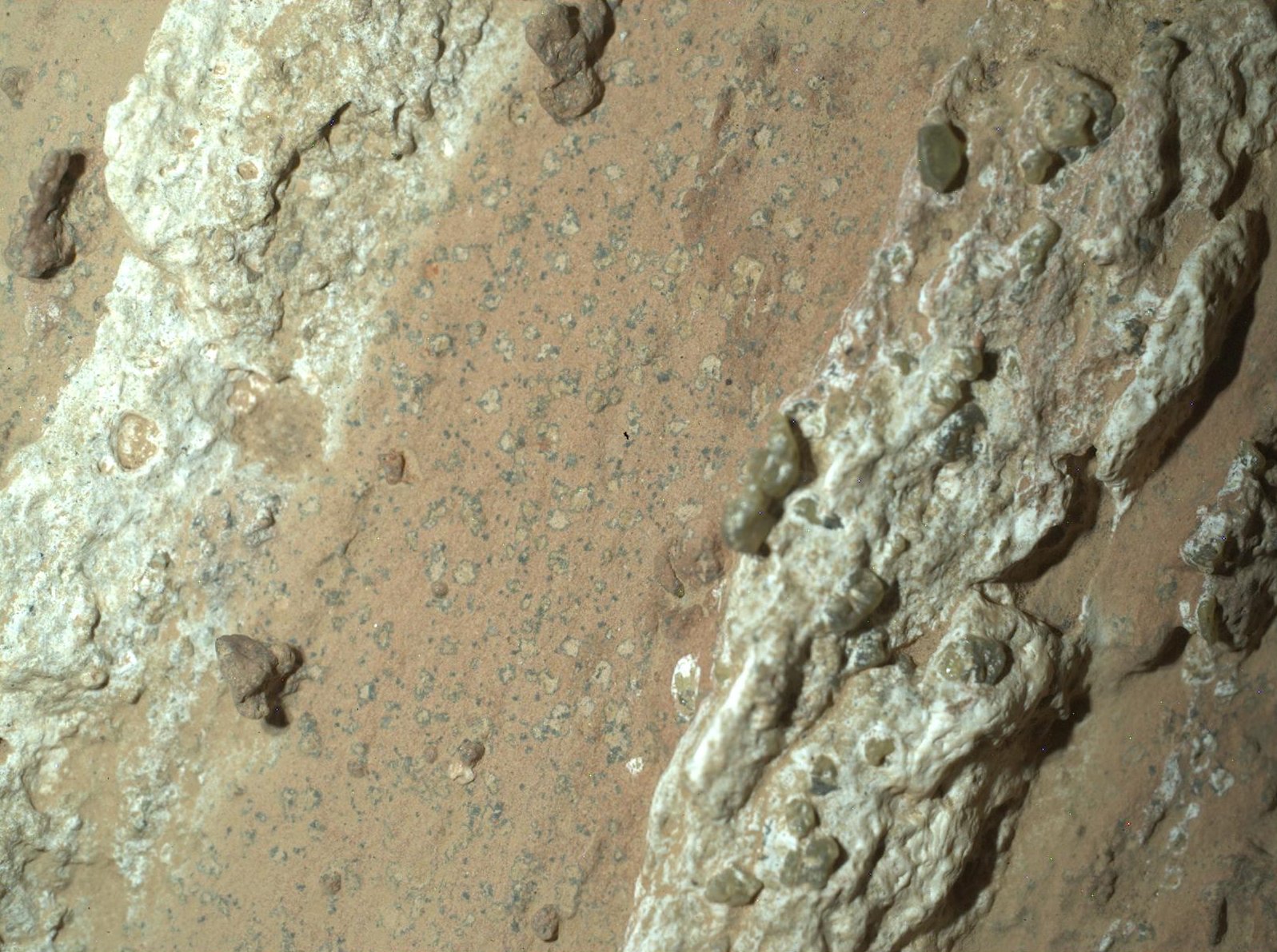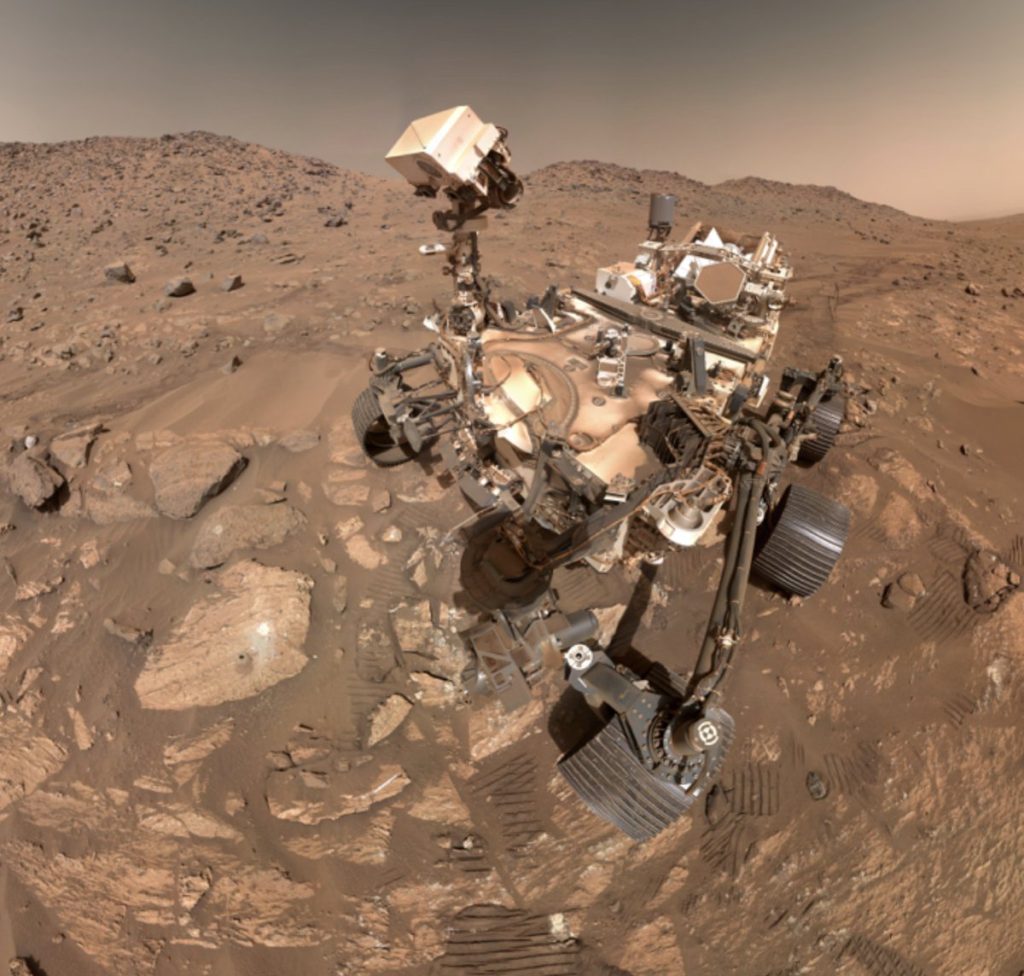A sample obtained by NASA’s Perseverance rover of reddish rock formed billions of years ago from sediment on the bottom of a lake contains potential signs of ancient microbial life on Mars, according to scientists, though the minerals spotted in the sample also can form through nonbiological processes.
The discovery by the six-wheeled rover in Jezero Crater represents one of the best pieces of evidence to date about the possibility that Earth’s planetary neighbor once harbored life.
Perseverance scientist Joel Hurowitz of Stony Brook University, lead author of the study published in the journal Nature, said a “potential biosignature” was detected in rock that formed at a time when Jezero Crater was believed to have been a watery environment, between 3.2 and 3.8 billion years ago.
Acting NASA Administrator Sean Duffy told a news conference that the U.S. space agency’s scientists examined the data for a year and concluded that “we can’t find another explanation, so this very well could be the clearest sign of life that we’ve ever found on Mars – which is incredibly exciting.”
NASA released an image of the rock – a very fine-grained, rusty-red mudstone – bearing ring-shaped features resembling leopard spots and dark marks resembling poppy seeds. Those features may have been produced when the rock was forming by chemical reactions involving microbes, according to the researchers.
A potential biosignature is defined as a substance or structure that may have a biological origin but needs more data or further study before a conclusion can be made about the absence or presence of life.
Nicky Fox, associate administrator for NASA’s Science Mission Directorate, noted that the scientists were not announcing the discovery of a living organism.
“It’s not life itself,” Fox told the news conference.
The rover since 2021 has been exploring Jezero Crater, an area in the planet’s northern hemisphere that once was flooded with water and home to an ancient lake basin. Scientists believe river channels spilled over the crater wall and created a lake.
Perseverance has been analyzing rocks and loose material called regolith with its onboard instruments and then collecting samples and sealing them in tubes stored inside the rover.
It collected the sample named Sapphire Canyon in July 2024 from a rock called Cheyava Falls in a locale known as Bright Angel rock formation. The sample came from a set of rocky outcrops on the edges of Neretva Vallis, an ancient river valley about a quarter of a mile (400 meters) wide carved by water rushing into the crater.
TELLTALE MINERALS
Two minerals were detected that appear to have formed as a result of chemical reactions between the mud of the Bright Angel formation and organic matter present in that mud, Hurowitz said. They are: vivianite, a mineral bearing iron and phosphorus, and greigite, a mineral bearing iron and sulfur.
“These reactions appear to have taken place shortly after the mud was deposited on the lake bottom. On Earth, reactions like these, which combine organic matter and chemical compounds in mud to form new minerals like vivianite and greigite, are often driven by the activity of microbes,” Hurowitz told Reuters.
“The microbes are consuming the organic matter in these settings and producing these new minerals as a byproduct of their metabolism,” Hurowitz said.
The rover’s instruments found that the rock was rich in organic carbon, sulfur, phosphorus and iron in its oxidized form, rust. This combination of chemical compounds could have offered a rich source of energy for microbial metabolisms, Hurowitz said.
But Hurowitz offered some words of caution.
“The reason, however, that we cannot claim this is more than a potential biosignature is that there are chemical processes that can cause similar reactions in the absence of biology, and we cannot rule those processes out completely on the basis of rover data alone,” Hurowitz said.
Mars has not always been the inhospitable place it is today, with liquid water on its surface in the distant past.
The sample collected and analyzed by Perseverance provides a new example of a type of potential biosignature that the research community can explore to try to understand whether or not these features were formed by life, Hurowitz said, “or alternatively, whether nature has conspired to present features that mimic the activity of life.”
“We can make a lot of progress on this question with laboratory experiments and fieldwork here on Earth to try to understand the various pathways that might create features like the ones we observe in the Bright Angel formation. But the ultimate tests can only be performed on the Sapphire Canyon core sample if and when it is brought back to Earth for study,” Hurowitz added.
U.S. President Donald Trump’s current budget proposal would cancel NASA’s existing Mars Sample Return mission. Duffy said NASA is examining various ways for potential sample retrieval or even sending equipment to Mars to do further analysis there.
“We’re going to look at our budgets and we’re going to look at our timing, and how we spend money better and what technology do we have to get samples back more quickly,” Duffy said.
(Reuters)















